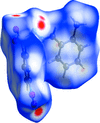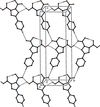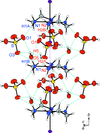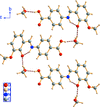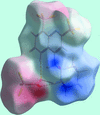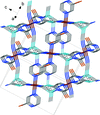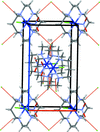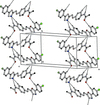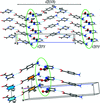issue contents
December 2018 issue

Cover illustration: An overview of six new complexes based on tris(bipyridyl)iron(II) is given, in which the counter-ion is a 2-substituted 1,1,3,3-tetracyanopropenide anion. Polynitrile anions are very versatile ligands, due to their ability to coordinate and bridge metal ions in many different ways. This allows molecular architectures with different topologies and dimensionalities to be obtained. In the present paper, these anions play a major role not as ligands, but in directing the supramolecular structure of the iron complexes, through the formation of C-H N and C-H
N and C-H
![[pi]](/logos/entities/pi_rmgif.gif) interactions. A detailed description of the different motifs present in the crystal structures is presented, taking into account the various forms of anion disorder. See: Addala, Setifi, Morimoto, Artetxe, Matsumoto, Gutiérrez-Zorrilla & Glidewell [Acta Cryst. (2018). E74, 1717-1726].
interactions. A detailed description of the different motifs present in the crystal structures is presented, taking into account the various forms of anion disorder. See: Addala, Setifi, Morimoto, Artetxe, Matsumoto, Gutiérrez-Zorrilla & Glidewell [Acta Cryst. (2018). E74, 1717-1726].
research communications




























































Crystal structure of 4-[(3-methoxy-2-oxidobenzylidene)azaniumyl]benzoic acid methanol monosolvate


































 journal menu
journal menu















